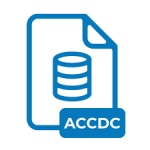.DB-SHM File Extension

SQLite Database Shared Memory File
| Developer | SQLite |
| Popularity | |
| Category | Database Files |
| Format | .DB-SHM |
| Cross Platform | Update Soon |
What is an DB-SHM file?
.DB-SHM files are an integral part of SQLite databases, a widely-used relational database management system. SQLite databases are self-contained, serverless, zero-configuration, transactional SQL databases, making them immensely popular for embedded systems and small to medium-scale applications.
These databases use a single ordinary disk file to store the entirety of its content, including tables, indices, triggers, and views.
The .DB-SHM file extension specifically refers to SQLite Database Shared Memory files. These files are utilized to share memory between processes accessing the same SQLite database.
SQLite uses shared memory to enhance performance and efficiency, especially in multi-process environments where multiple applications or instances need to interact with the same database simultaneously.
More Information.
SQLite, initially released in 2000, has evolved over the years to become one of the most widely deployed database engines globally. Its lightweight nature, ease of integration, and robust feature set have made it a popular choice for developers across various domains.
The introduction of .DB-SHM files further solidified SQLite’s position by addressing performance challenges associated with concurrent database access.
The primary purpose of .DB-SHM files are to facilitate shared memory mapping among processes accessing the same SQLite database file. By mapping portions of the database file into memory, SQLite enables faster read and write operations, reduced disk I/O, and improved overall system performance.
This mechanism is particularly beneficial in scenarios where multiple processes need to interact with the database simultaneously, such as web servers, mobile applications, and desktop software.
Origin Of This File.
The concept of shared memory in SQLite databases traces back to the need for efficient inter-process communication and resource management. With the rise of multi-process applications and systems, SQLite developers sought ways to optimize database access and minimize resource contention.
Thus, the .DB-SHM file extension emerged as a solution to facilitate shared memory usage among processes accessing SQLite databases concurrently.
File Structure Technical Specification.
.DB-SHM files contain metadata and pointers required for shared memory mapping. While the internal structure of these files may vary based on SQLite version and configuration, they typically include information such as:
- File Header: Contains metadata about the .DB-SHM file, including version information, size, and mapping details.
- Shared Memory Segments: Represents the portions of the SQLite database file mapped into shared memory. Each segment corresponds to a specific region of the database file and is accessed by processes for read and write operations.
- Pointers & Indexing: Maintains pointers and indexing information to facilitate efficient memory access and data retrieval.
- Control Structures: Includes synchronization primitives and control structures to manage concurrent access and ensure data consistency across processes.
.DB-SHM files are not intended for direct user interaction or manipulation. Instead, they serve as intermediary components within SQLite’s memory mapping mechanism, abstracting the complexities of shared memory management from end-users and application developers.
How to Convert the File?
Converting .DB-SHM files into other formats or structures are typically unnecessary, as they serve a specific purpose within SQLite’s internal mechanisms.
If the goal is to extract data from a SQLite database for analysis or migration purposes, various tools and libraries are available to facilitate this process.
One common approach is to use SQLite’s built-in utilities, such as the command-line tool sqlite3, to interact with the database directly.
Alternatively, developers can leverage programming languages like Python or Java, along with SQLite libraries and APIs, to query and manipulate database contents programmatically.
For more advanced scenarios involving large-scale data migration or transformation, specialized ETL (Extract, Transform, Load) tools and frameworks may be employed to handle .DB-SHM files and SQLite databases efficiently.
Advantages And Disadvantages.
Advantages:
- Improved Performance: Shared memory mapping reduces disk I/O overhead, resulting in faster read and write operations.
- Concurrency Support: Enables multiple processes to access the same SQLite database concurrently without risking data corruption or integrity issues.
- Resource Efficiency: Minimizes memory consumption by allowing processes to share memory rather than duplicating database contents in memory.
Disadvantages:
- Complexity: Managing shared memory mapping and synchronization mechanisms requires careful handling to avoid race conditions and data inconsistencies.
- Compatibility Issues: Differences in operating system support and SQLite configurations may impact the effectiveness of shared memory mapping.
- Security Concerns: Shared memory access introduces potential security vulnerabilities if not implemented and configured correctly.
How to Open DB-SHM?
Open In Windows
- Use SQLite GUI tools like DB Browser for SQLite or SQLiteStudio.
- Alternatively, you can use command-line tools like
sqlite3to interact with SQLite databases directly from the Command Prompt or PowerShell.
Open In Linux
- Similar to Windows, you can use SQLite GUI tools such as DB Browser for SQLite or SQLiteStudio.
- Command-line tools like
sqlite3are also available in Linux distributions, allowing you to work with SQLite databases from the terminal.
Open In MAC
- macOS users can utilize SQLite GUI applications like Base or SQLiteManager for graphical database management.
- Command-line access to SQLite is available through the terminal using the
sqlite3command-line interface.
Open In Android
- Android doesn’t have native support for opening .DB-SHM files directly.
- However, you can interact with SQLite databases within Android applications using SQLiteOpenHelper or SQLiteDatabase classes provided by the Android SDK. Additionally, there are third-party database management apps available on the Google Play Store that allow you to view and manipulate SQLite databases on Android devices.
Open In IOS
- iOS doesn’t support direct opening of .DB-SHM files.
- In iOS app development, SQLite databases are commonly accessed using the SQLite library or CoreData framework. Developers can utilize these tools to interact with SQLite databases programmatically within iOS applications.













